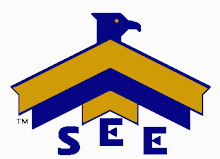The needs for effective communication in a leadership role are indisputable. The role of poor communication patterns and skills is equally known and understood. In fact, most issues surrounding team morale, lack of involvement, poor accountability and bad performance can be traced back to the communication of a group’s leader.
Communication is a tricky combination of art and science. In it’s basic form, communication is the flow of information between humans. The last part about being a human phenomenon is important to remember. Communication is a human connectivity that is critical to the leadership role because it enjoins people in a unique and personal way to the tasks and mission of an organization. It also relates directly to the personal nature of leadership and the connection point of why people will follow a leader. To have people to want to follow, the leader must communicate with them.
If you look at leadership as the consistent and constant application of skill sets, communication is the foundation upon all others will be built. Failed communication is the cardinal sin of leadership. Effective communication will be the rock on which the other skill sets rest.
Richness
The first concept of communication effectiveness in leadership is to understand message richness. Richness describes the total content within any communication and the connect points that a communication receiver is able connect. Richness is also highly related to the emotional nature of humans. Our team members are creatures of emotion and not creatures of logic. The greater the degree of richness, the greater the emotional connection to the message.
In-person interaction has the highest degree of richness because all parts of the message sender and receiver can be evaluated and processed. Body language can be read. Tone can be interpreted with accuracy. Clarification can be requested. Understanding can be evaluated. Rapport can be built. By far and away, one-on-one personal dialog has the highest richness.
When using the telephone, richness begins to diminish. Although tone can still be evaluated and clarification can be achieved, there are no non-verbal messages to evaluate. Similarly, in public communications, meetings and presentations, richness also fades because of the lack of interactive elements related to clarification and understanding.
Richness takes a final hit when we convert communication to the written word. With the exception of Nobel Laureate winners, most people cannot achieve any type of meaningful connectivity in writing. Even with emoticons, colored backgrounds and dancing symbols, emails have a coldness and lack any ability for clarification. Written communication also has a high probability for misinterpretation and misunderstanding. Humor and personality can rarely be translated in the written word.
One challenge to consider is compare the amount of time spent recovering from a misunderstood email to the amount of time spent to walk down the hall and talk to the recipient. Consider how much time you might spend repairing a relationship from a terse one line email. When possible, engage in interpersonal, one-on-one communication.
Subscribe to:
Post Comments (Atom)






No comments:
Post a Comment